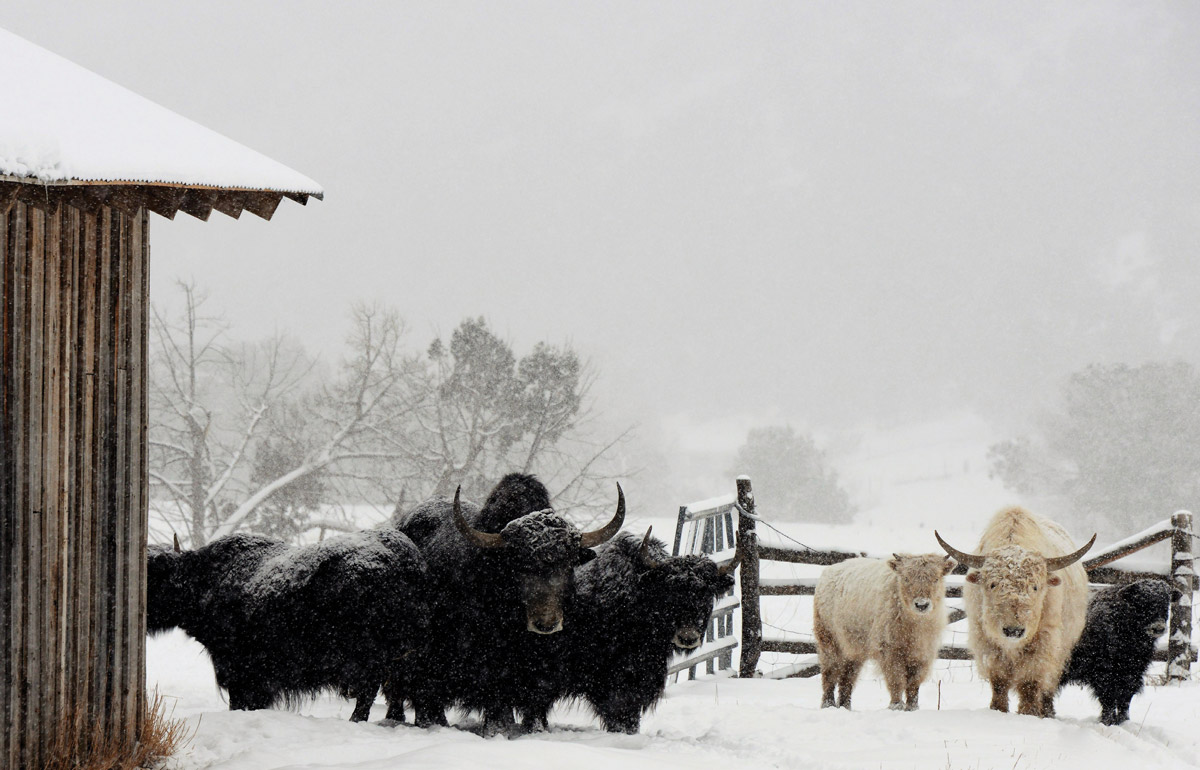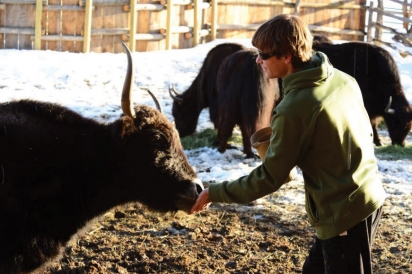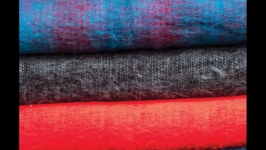At Home on the Range
The human-animal bond is strong at Butte Pasture Yak Ranch
It’s a bright, cloudless day and all is quiet at Crawford’s Butte Pasture Yak Ranch; the sounds and smells you’d expect from a livestock operation are noticeably absent. As I emerge from the weathered barn into open pasture, a joyful hoot from owner Shannon Holder breaks the silence: The lithe rancher and mother of two young boys is astride a fully grown yak. She dismounts to greet me and is intercepted by Solstice, an 18-month-old bottle-reared yak heifer.
While Solstice persistently nuzzles my hand (she reminds me more of loyal canine companion than farm animal), Holder tells me that the calf was abandoned after stray dogs separated her from her mother. Because Solstice was bottle-fed, she retains an endearing habit of “nursing” hands.
As I’m wondering if all yaks are this sweet (and if Solstice will ever come up for air), Holder stops and points behind me, “That’s a bull. Just move to the right, so he can pass.” To discourage curious advances, Holder approaches bulls with her arms straight up to make herself appear larger. Watching her, I observe what appears to be thoughtful contemplation from the bulls, and an interaction based on mutual respect and understanding.
“You can’t just do anything you want to a yak, like you might with more docile animals. They’re spirited and extremely capable of overpowering whatever threatens them, but they’re also domestic by nature and eager to comply if you earn their respect by handling them with compassion,” says Holder.
Holder got her first two yaks 15 years ago and “became a breeder by default after I realized they need to be freshened [rebred] every year to maintain the milk supply.”
Holder isn’t the only person in Crawford enamored of yaks. Her parttime ranch manager, Carter Keegan, has a deep respect for the shaggy bovines. The 23-year-old college student is studying animal behavior, ecology and conservation at Canisius College in Buffalo, New York, and plans to use his degree to develop improved sustainable practices on farms in his home community. As a teen, he divided his time between his father’s home in Crawford—which abuts the Holder’s ranch—and his mother and stepfather’s farmhouse in Paonia.
At 17, Keegan began volunteering to help the Holders with their animals, which turned into a ranch hand and yak advocate job that led to the formation of Yaks 101 Tours, which helps the public better understand the yak-human symbiosis. For the past six years, he’s worked alongside Holder and “some special yaks.” Being a part of the ranch and involved in its evolution is, he says, an experience that’s fostered self-confidence and creativity.
Keegan is autistic and his passion for yaks goes beyond their uses as “efficient and functional farm animals (see sidebar “Facts on Yaks,” page 25). “My favorite pastime is to be among the herd in silence; just being around them puts me at ease,” he says.
He points to his autism as one reason animal handling comes so naturally. “I have a heightened sensory awareness to sounds, visual details and overly discriminatory touch. When around animals, these intense alerting sensory abilities have aided my relationship building, particularly with yaks.” Keegan studies them and copies their behavior, saying, “I prefer their silent, slow pacing and calm nature. I mimic a yak’s movement, taking strides at their pace, and pause to see what’s caught their attention, observing.”
Keegan’s comments echo those of Dr. Temple Grandin, the world-renowned Colorado State University Animal Science professor and autism advocate. I recently attended the first Rocky Mountain Yak Expo (Yakspo.com) in Loveland, at which Grandin delivered the keynote address. “Animals store memories as pictures, sounds, smells or touches. It’s sensory memory,” she said. In a follow-up phone call, she elaborated: “The way autistic people think is, in some ways, similar to animals because we [people with autism] don’t think in words. It’s easier to understand an animal if you think how they do.”
As I wind down my visit at the ranch, Holder weaves a yak fiber rope for me. As her nimble hands work, she looks off to the horizon and says, “I’m not sure what’s taught me more about life: raising my boys or raising these yaks.”
GO FIND IT!
Butte Pasture Yak Ranch, Crawford YaksMatter.com







